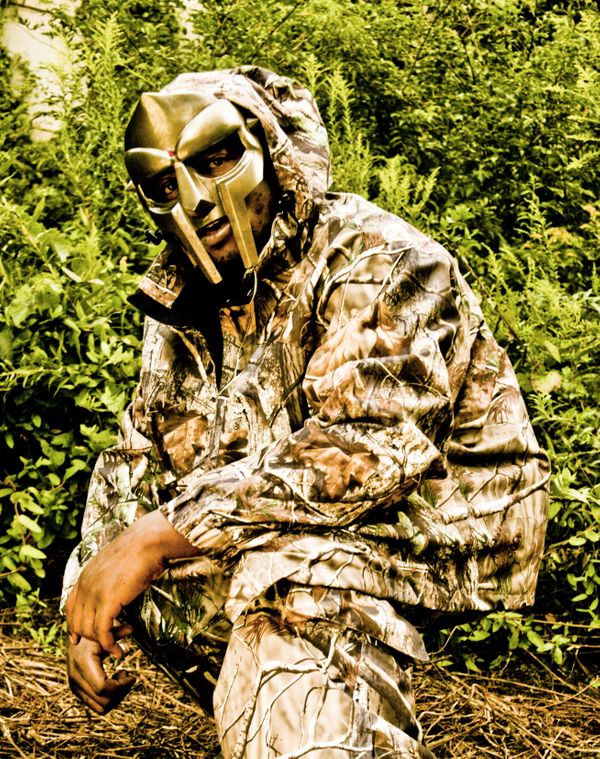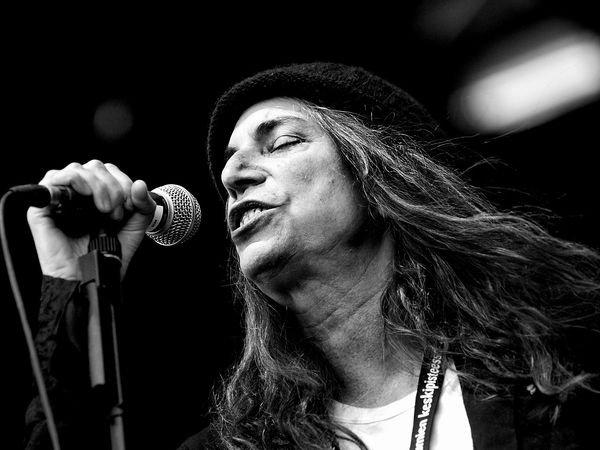by Raphael Helfand
My family moved from a cramped apartment in Brooklyn to a sprawling property outside Hartford when I was 11. As a white suburban kid with city roots, I was, of course, an aspiring hip-hop producer. A jazz piano student, I was close to competent at creating instrumentals from scratch on my MIDI keyboard in Logic Pro. But I was clueless when it came to finding samples, or new music in general. I thought a pitchfork was what the farm kids in my town used to bale hay, and that a complex was what my mother, an experimental playwright turned therapist, had given me. And in Simsbury, CT, there was no one to tell me otherwise. The tools at my disposal were Mediafire, Limewire (in all its iterations), bit-torrent trackers (Pirate Bay, et cetera—I was nowhere near cool enough for a What.CD invite), and WhoSampled. The latter was my gateway to MF DOOM. I spent countless hours playing the musical version of Six Degrees to Kevin Bacon alone in my room, and DOOM was a name that appeared too frequently to ignore. Arguably the greatest sampler of all time, DOOM was a WhoSampled homestay.
Mm.. Food broke my brain. A casual Marvel Comics nerd, I knew the narratives of most of the characters referenced in DOOM’s sophomore album’s countless cartoon samples, and I was floored by how smoothly he wove them into his other instrumentals. The beats themselves took me down enlightening rabbit holes that were crucial to my fledgling musical development. “Beef Rapp” brought me to Zappa, who led me to Captain Beefheart. “Hoe Cakes” exposed me to the wonderful world of JJ Fad, who in turn took me to Salt-N-Pepa. “Vomitspit” showed me Mashmakhan, who brought me on a strange tour of the early ‘70s proggy, psychedelic folk scene. “One Beer,” which gave me my first taste of Madlib, also introduced me to the inimitable Cortex and the world of Euro jazz fusion. And when I made my way back in time to DOOM’s debut, Operation Doomsday, “Gas Drawls” taught me Steely Dan was more than the yacht rock band my detestable geometry teacher Mr. Smith liked.
You could fill the shelves of the Brooklyn Public Library with what the world doesn't know about Daniel Dumile. His reclusiveness and his love of trolling his fans, sending masked impostors onstage to better embody his supervillain persona, were well-documented lore long before his death, and are even more so now. Surprisingly, Dumile gave plenty of interviews, but he liked to contradict himself, giving conflicting information about his personal life. I got into MF DOOM (one of Dumile’s many musical monikers) in 2008 but never attempted to learn about the man behind the metal mask. By the time he released Born Like This in 2010, I’d worn out both of his other MF DOOM releases, in reverse chronological order, and Madvillainy (his epic, 22-track collab with producer Mad Lib). Since all his other work was released under different stage names, I only vaguely knew he’d released more than three albums, but even those were universes in and of themselves.
I never worked hard enough to become an actually decent producer, despite committing the ultimate whiteness by hiring my piano teacher—a jazz musician who moonlit as beatmaker King Solomon and produced for the likes of KRS-One (in the late aughts), while pursuing a political solo project—to show me the ropes (on my parents’ dime, of course). But my piecemeal WhoSampled education brought me far more joy than the p4k-canon crash course I took my freshman year of college to endear myself to my new radio friends.
MF DOOM was still part of my life then, and I spent long afternoons faded out of my mind, pouring over the Special Herbs tapes. But by sophomore year, I got Soundcloud-pilled and rejected the backpacker world for Future, Young Thug, Travis Scott (Days Before Rodeo only), and the far more noxious fumes wafting from the site’s further reaches. I found some exciting artists there but left my soul behind with De La Soul, DOOM and J Dilla. It wasn’t until the summer after I graduated that, for a brief interlude, I decided to try listening to music for fun rather than clout, like I had back in high school. (Come fall, I’d opted for a ~career~ that took me in the opposite direction.)
That brief summer fling with aesthetic honesty brought me to Vaudeville Villain, an album I’d missed because it was released under one of Dumile’s alter egos, Viktor Vaughn. It came out during the most prolific period of Dumile’s career. Between 2003 and 2004, he released four solo LPs and three collab albums, recording alternately as MF DOOM, King Geedorah, Viktor Vaughn, and half of Madvillain. Across most of these monikers, his persona is consistent—supervillain, recluse, nerd. But as Viktor Vaughn, he cosplays as a slightly different character, one with a bit more of the braggadocio of the other New York rap legends of his generation.
In the early ‘90s, when DOOM was growing out of his teens in Long Beach, NY, working on the second KMD album with his brother, DJ Subroc, Nas was still in high school crafting Illmatic, and Havoc and Prodigy were pitching the first Poetical Poets demo tape door to door at record labels—all one borough’s width away, in the Queensbridge projects overlooking the East River. But KMD’s Black Bastards wouldn’t see daylight until 2001. Its controversial cover image scared off the group’s record label, and as they were starting to pitch it elsewhere, Subroc was hit by a bus and killed. Dumile went into hiding for half a decade. When he returned, he was DOOM.
From the first bar of Vaudeville Villain, I was swept back to Brooklyn, to a time before I had an iTunes library, when my family’s internet plan was still dial-up. Back then, my parents didn’t want me listening to too much hip-hop and didn’t let me use my allowance money to buy CDs labeled EXPLICIT CONTENT. But I was allowed a radio in my bedroom, and in Brooklyn, that meant Hot 97 and Power 105. I’d run the single city block from my school to my apartment when my after-school program ended, anxious to get back to the sounds of Funkmaster Flex and practice Nerf dunks on my door-frame hoop. My New York pre-adolescence introduced me to Biggie, Nas, Mobb Deep, Big Pun, Big Daddy Kane, et al., so I’ve always had a nostalgic spot for gritty bars about drug-dealing and being mean to women. A decade later, I appreciated DOOM’s tongue-in-cheek homage to that ethos, and to the city whose periphery he’d circled since his family crossed the Atlantic. He’d moved from London to Long Island around the same age I left Brooklyn for the burbs. But by the time I heard Vaudeville Villain, he’d been barred from re-entering the US after a 2010 European tour. He would never set foot on New York soil again.
Even when Dumile plays with dusty tropes, his style is revelatory. On Vaudeville Villain, he creates a template for Freddie Gibbs’ off-kilter coke music (“Lactose and Lecithin”), sets the standard of sexual self-humiliation for Father and his Awful Records acolytes (“Can I Watch?”) and invents the stuttering production and stop-and-go delivery of Vince Staples, JPEGMAFIA and early Earl Sweatshirt (“Raedawn”).
All these artists have unsurprisingly expressed their love for Dumile in the days and weeks since the announcement of his passing, as has a community of hip-hop writers that looks overwhelmingly, embarrassingly like me. But the huge outpouring of love for Metalface from outside these two groups is proof of his transcendence. He’s not just your favorite rapper’s favorite rapper, or a Pitchfork curiosity, or a messageboard darling. He’s one of the greatest artists to ever walk the earth, and his music will echo in space long after we are all underwater.
Raphael Helfand is Laid Off NYC's Editorial Director and co-edits our Music section. Get to know him better: @raphaelhelfand



